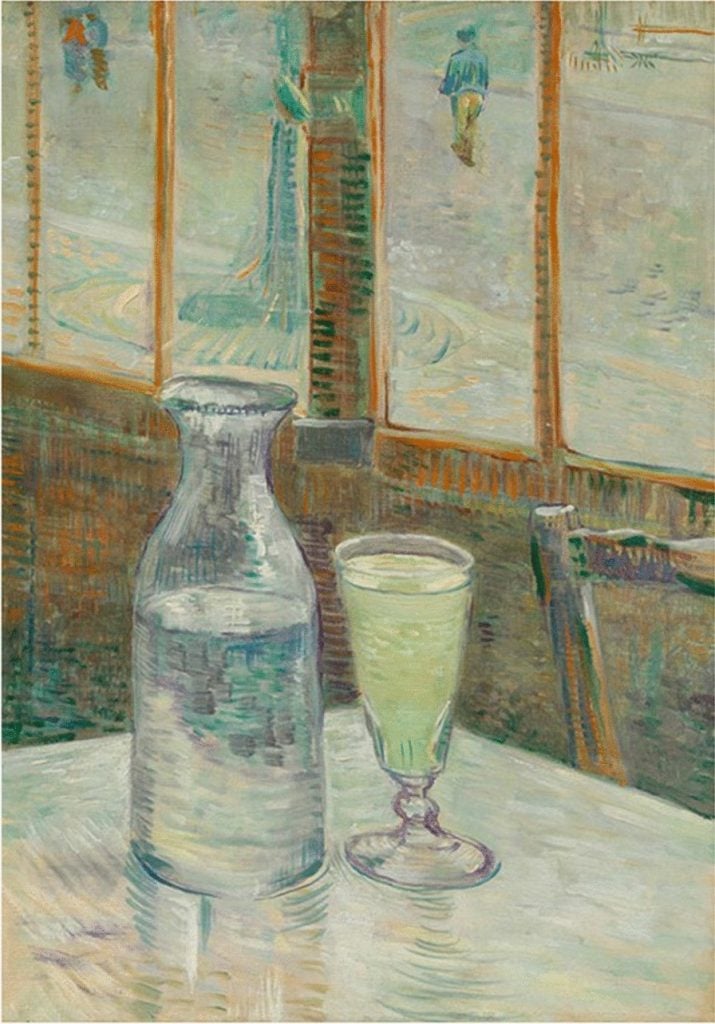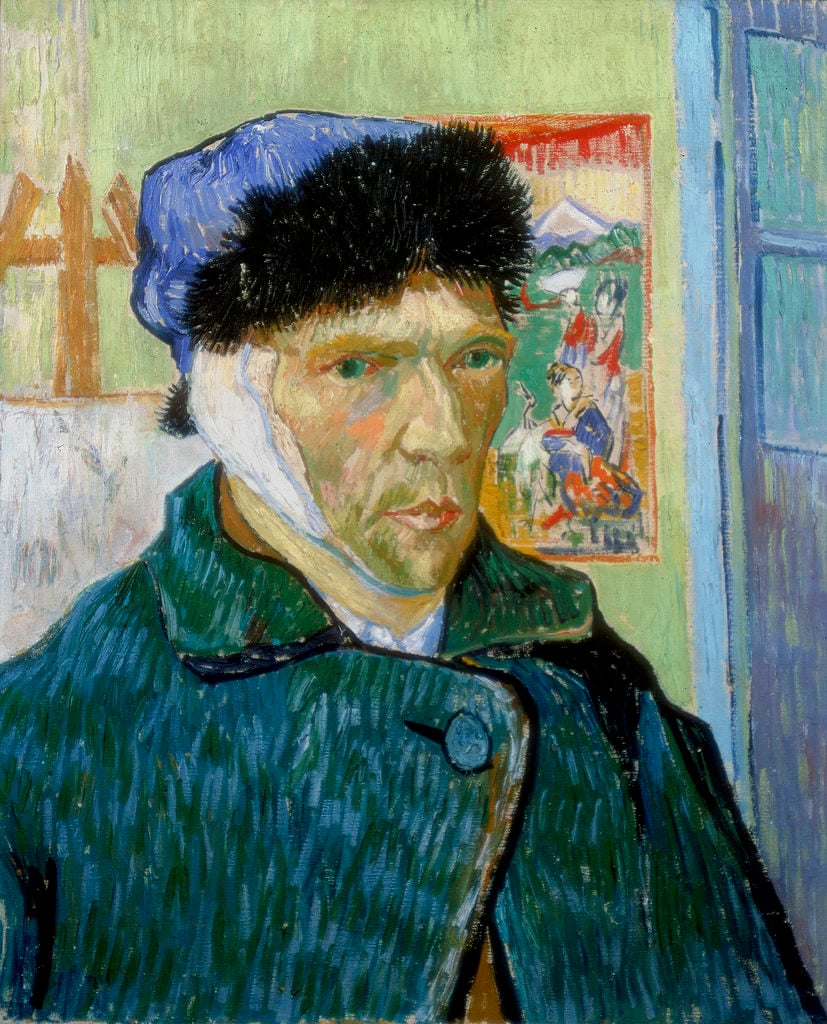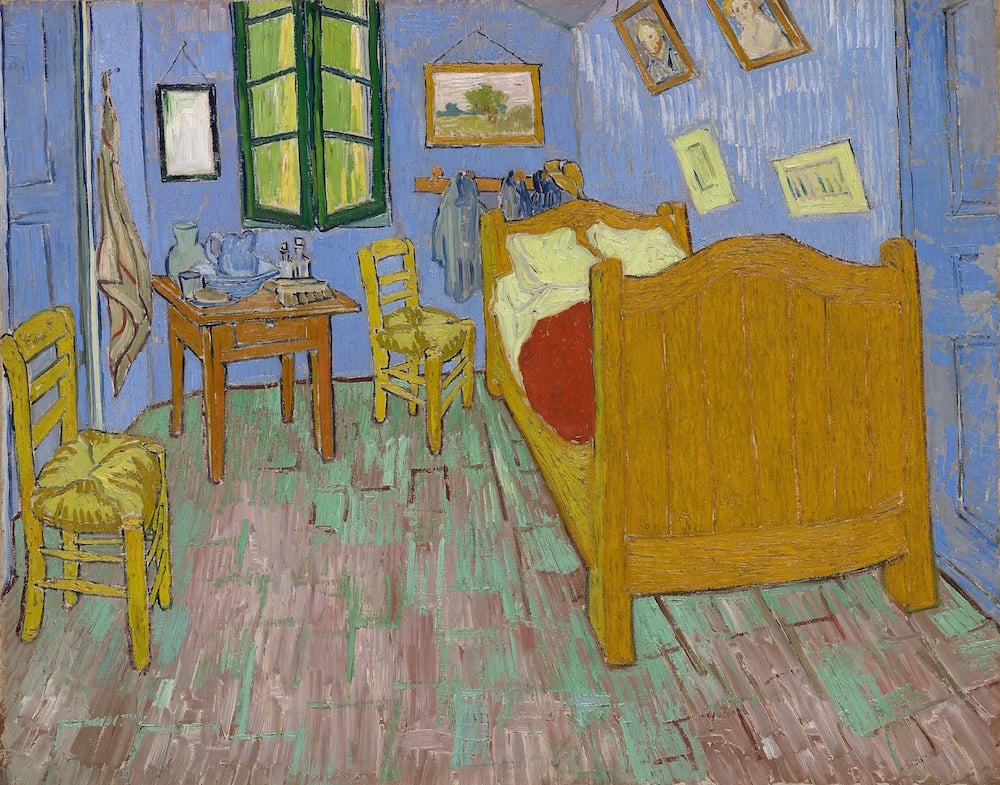Art World
Van Gogh May Have Cut Off His Ear During a Bout of Delirium Triggered by Alcohol Withdrawal, a New Study Says
Many experts have worked to diagnose Van Gogh's mental health issues.

Many experts have worked to diagnose Van Gogh's mental health issues.

Sarah Cascone

Has one of art history’s great unanswered questions finally been laid to rest? A new study claims that Vincent van Gogh was malnourished, sleep deprived, and mentally ill, but was ultimately pushed to extremes by alcohol addiction, cutting off his ear during a psychotic episode fueled by alcohol withdrawal.
“Those who consume large amounts of alcohol… run the risk of brain function impairment,” explains the study, published by a team led by University Medical Center Groningen psychiatrist Willem A. Nolen in the International Journal of Bipolar Disorders. “Moreover, abrupt stopping with excessive alcohol consumption can lead to withdrawal phenomena, including a delirium.”
Van Gogh’s infamous act of self-mutilation has been the subject of continued interest—and much debate—over the years. There are theories that he cut himself in despair over his friend Paul Gauguin’s decision to abandon their planned artist colony in Arles; because he was distraught after learning of his brother’s engagement; or to silence unbearable hallucinations.
The question of the Dutch artist’s mental health inspired its own exhibition, “On the Verge of Insanity” at Amsterdam’s Van Gogh Museum in 2016. German artist Diemut Strebe even created a living bioengineered replica of the severed organ using genetic samples from the artist’s great-great-great nephew.

Vincent van Gogh, Self-Portrait with Bandaged Ear (1889). Photo by Art Media/Print Collector/Getty Images.
Now, this study contends that just before Van Gogh cut off his ear, “he likely stopped drinking abruptly,” and the psychotic break was “actually an [incident of] alcohol withdrawal delirium.”
Van Gogh’s own letters provide evidence of his alcoholic tendencies—and his failed efforts to curb his excessive consumption, which indicate alcohol dependency. “The only thing that comforts and distracts—in my case—as in others, is to stun oneself by taking a stiff drink,” he wrote while living in Arles. “If the storm within roars too loudly, I drink a glass too many to stun myself.”
A representative of the Van Gogh Museum expressed skepticism about the publication in an email to Artnet News, writing, “The medical diagnosis of historical figures is full of pitfalls, and our Van Gogh experts are still hesitant when it comes to drawing firm conclusions.” The new study is “repeating and combining theses that in themselves are not entirely new,” and were addressed by the museum’s 2016 show, they noted.
The study allows that Van Gogh’s letters don’t offer necessarily offer an accurate picture of his mental state. “Although [they] contain a lot of information, we must remember that he didn’t write them to his doctors, but to… family members and other relatives in order to inform them, to reassure them, or to get something done,” the authors wrote.
But study diagnosticians still used the letters to fill out four personality disorder questionnaires. What they found was that “the combination of the different traits convincingly indicate a severe borderline personality disorder.” Additionally, the symptoms of alcohol withdrawal might provide an explanation for Van Gogh’s possibly temporal lobe epilepsy, diagnosed during his lifetime by his doctor, Théophile Peyron.

Vincent van Gogh, The Bedroom (1889). Helen Birch Bartlett Memorial Collection. Courtesy of the Art Institute of Chicago.
The study paints a dire picture of the artist’s mental health, with various factors contributing to his psychotic break. Van Gogh is believed to have been bipolar, with his brother Theo writing of the artist’s dueling personalities, “the one marvelously gifted, sensitive and gentle, and the other self-loving and unfeeling.”
The complicated state of Van Gogh’s psyche has proven difficult to crack in the past, with 35 specialists at a 2016 conference at the Van Gogh Museum failing to definitively pin down the cause of his mental illness.
“There have been thousands of medical papers about Van Gogh’s mental condition, but it has proved remarkably difficult to determine the cause of his problems,” said Martin Bailey, a Van Gogh expert at the Art Newspaper, in an email to Artnet News. “This latest paper, by some distinguished specialists, is certainly important and based on a serious study of the artist’s symptoms. But it is unlikely to be the last word on this challenging question.”